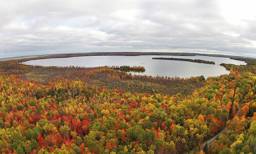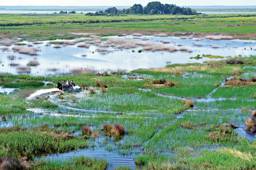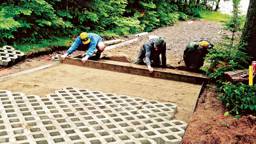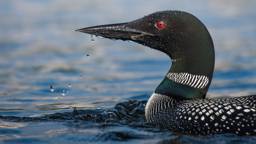— Attack of the Killer Tomatoes
While hardly the height of cinematic dialogue, this line from the classic B-movie is undoubtedly true. Moreover, it’s also undoubtedly true that plants running amok don’t usually kill people — but they can be harmful to your cabin environment and your pocket book.
Invaders!
Take water hyacinths, for instance. These South American natives won space in water gardens based on their beauty, but also won a spot on “The World’s 100 Worst Invasive Species List” based on astonishing growth rates. Managing an infestation is an expensive proposition, but left to its own devices, a population can double in two weeks. Water hyacinths clog waterways, take away habitat for native species, and create prime habitat for mosquitoes and a snail associated with schistosomiasis (snail fever).
Beginning in the 1960s when it was released from aquarium tanks, hydrilla has crept through waterways from Florida to states along the Eastern seaboard and across the Southwest. Boaters unwittingly aided and abetted this troublemaker. Fragments of hydrilla can become caught on boats and trailers and move overland between unconnected waters.
Eurasian watermilfoil also joins the ranks of America’s nightmarish aquatic plants. Like hydrilla, Eurasian watermilfoil can create an almost impenetrable mat of vegetation on a lake. Both species can dominate waterways, dramatically impede water flow, block sunlight, and decompose with such vehemence as to reduce the oxygen available for other aquatic life. Milfoil also tangles up in boat propellers and trailers, making overland leaps possible.
Depending on where you are, you might be battling other invasive plants — like giant salvinia, salt cedar, caulerpa (a.k.a. Mediterranean killer seaweed), or purple loosestrife — for access to your favorite fishing hole.
They’re Spreading!
Aquatic invasive species are speed demons. They grow, reproduce and spread with extraordinary speed. Many move by hitchhiking on recreational watercraft. Less commonly, invaders can travel with shoreland restoration plantings, escape from backyard water gardens, and can enter new territory when they are dumped from aquariums or bait buckets. Because some species can travel to new areas through multiple pathways, preventing their spread requires additional vigilance.
Besides harming the recreational value of natural resources, aquatic invasive species (which include a variety of animals and diseases as well as plants) can generate serious environmental, social, and economic problems. Once established, managing aquatic invasive species can be costly and eradicating them is often not feasible.
The Fight is On
Research shows that people will act to prevent the spread of invasive species — provided they know what to do. You have an opportunity to help keep invasive species in check simply by becoming aware of how they look and the ways they spread, taking measures to prevent their movement, and sharing your insights on aquatic invasive species with others.
Cabin owners, shoreline property owners and lake associations are partnering with recreational boating and conservation groups to help successfully raise awareness, promote action and protect water resources. They’re joining the over 700 businesses, industries, agencies and organizations partnering in the free Stop Aquatic Hitchhikers! network. Visit www.protectyourwaters.net for more information.
The U.S. is dotted with tens of thousands of lakes and reservoirs, connected through hundreds of thousands of miles of rivers and streams, and defined by an ocean coastline which, if extended, would stretch halfway around the Earth. There is a lot of water, a lot of shoreline and a lot of water-loving people. If we arm ourselves with knowledge and unite to battle invasive plants ... well, they don’t stand a chance.
Stop Aquatic Hitchhikers!
Before launching … before leaving:
- Remove aquatic plants, fish, animals and mud from boat, motor, trailer and equipment.
- Drain water from boat, motor, bilge, livewell and bait buckets.
- Dispose of unwanted live bait, fish parts and worms in the trash.
- Rinse boat and equipment with high pressure, hot (120 degrees or higher) water on your way home or at home, OR
- Dry everything for at least five days.










